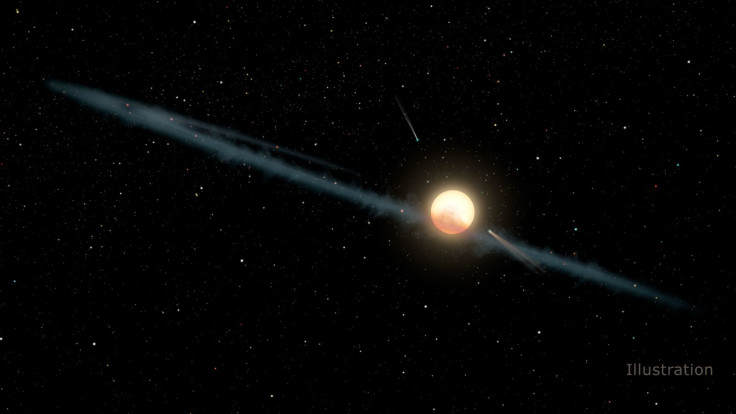Aliens Likely Flashing Laser Beams At Us, VERITAS Could Help Find Them

If intelligent alien civilizations do exist, scientists think they could be using powerful flashlights to communicate with us. Astronomers have started to explore the idea that aliens could be trying to contact us through laser beams.
Breakthrough Listen, a project that attempts to detect intelligent extraterrestrial communications in the universe, has announced that its team will start to look for this potential new sign of alien technology using the Very Energetic Radiation Imaging Telescope Array System (VERITAS) at the Fred Lawrence Whipple Observatory in Amado, Arizona.
Using VERITAS, astronomers will scan the night sky for nanosecond flashes of light from nearby stars. These brief pulses of optical light are like lighthouse beacons for cosmos that outshine any nearby stars, and may possibly be a method of alien communication.
Berkeley's SETI Research Center director Andrew Siemion said NASA already used optical communication to transmit high-definition images from the moon to Earth, so there’s reason to believe that an advanced civilization may use a scaled-up version of this technology for interstellar communication.
Siemion also said that VERITAS could help astronomers detect fast optical pulses, which could possibly originate from alien tech.
In 2016, astronomers discovered the weird behavior of the Tabby’s star, located 1,600 light-years away in the constellation Cygnus. The star exhibit odd dips in light, prompting speculations that an alien megastructure was periodically blocking the light and causing the odd dimming.
Astronomers said that if the mysterious dimming is due to an artificial structure around the star, the beings behind it could be using it as a form of communication.
"If the brightness variations were indeed due to an artificial structure around the star, then perhaps the beings that created the structure are communicating using optical lasers," Howard Isaacson, an astronomer at the University of California, Berkeley, has told Live Science.
VERITAS was used to look for laser pulses from the Tabby's Star, after it was suspected there could be an alien megastructure around it.
If the most powerful laser on our planet were used at this star and pointed in our direction, VERITAS could detect them.
Interestingly, most of the 1 million stars that Breakthrough Listen searches for extraterrestrial life are 10 to 100 times closer to Earth than Tabby’s star. This means that VERITAS could detect even weaker laser flashes that could possibly originate from intelligent aliens.
"With the addition of VERITAS, we're sensitive to an important new class of signals: fast optical pulses," Siemion said.
© Copyright IBTimes 2025. All rights reserved.





















